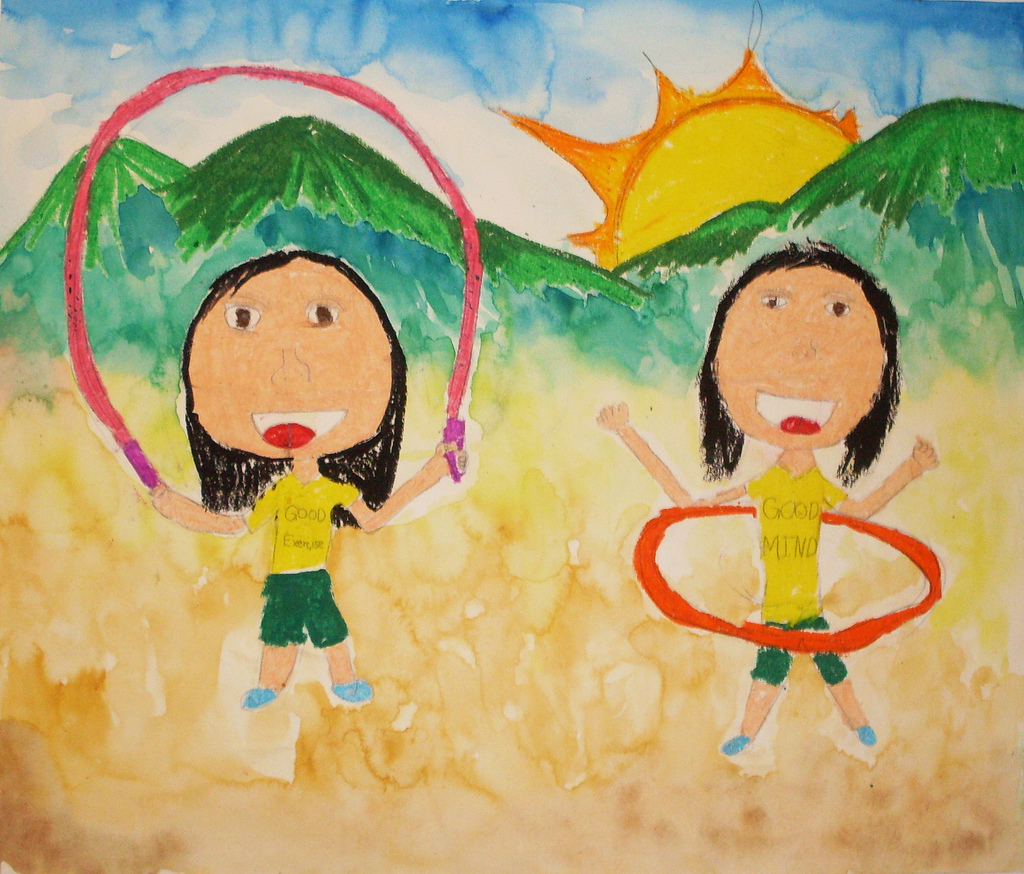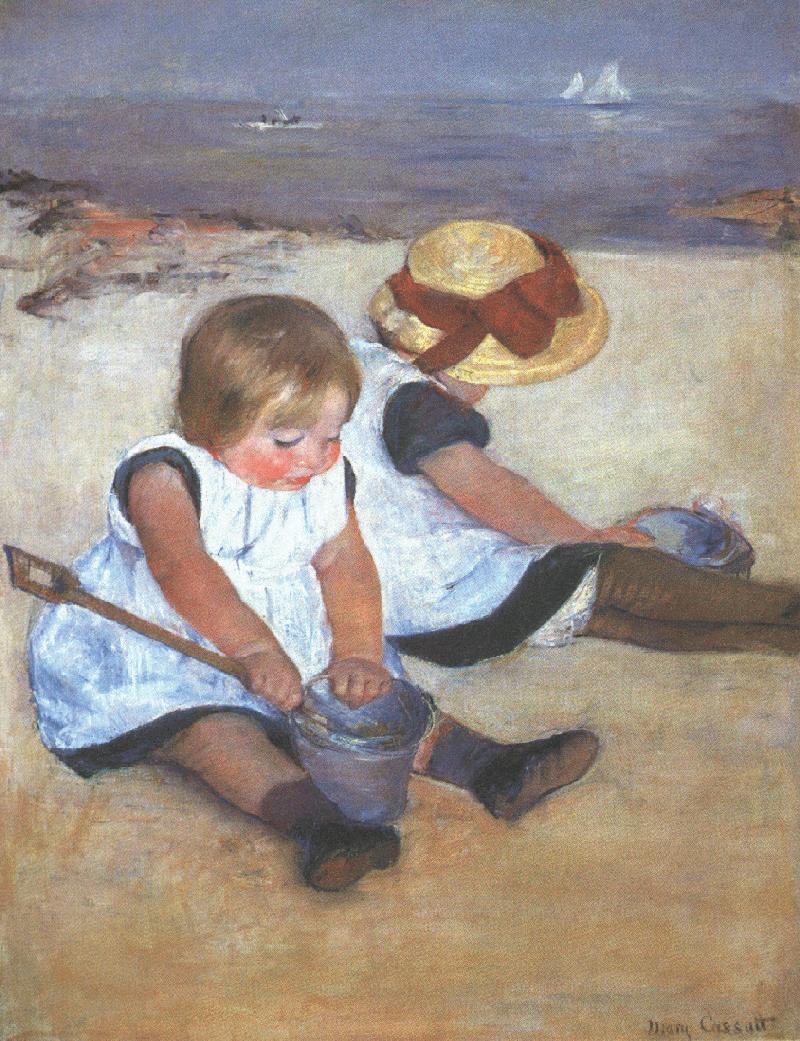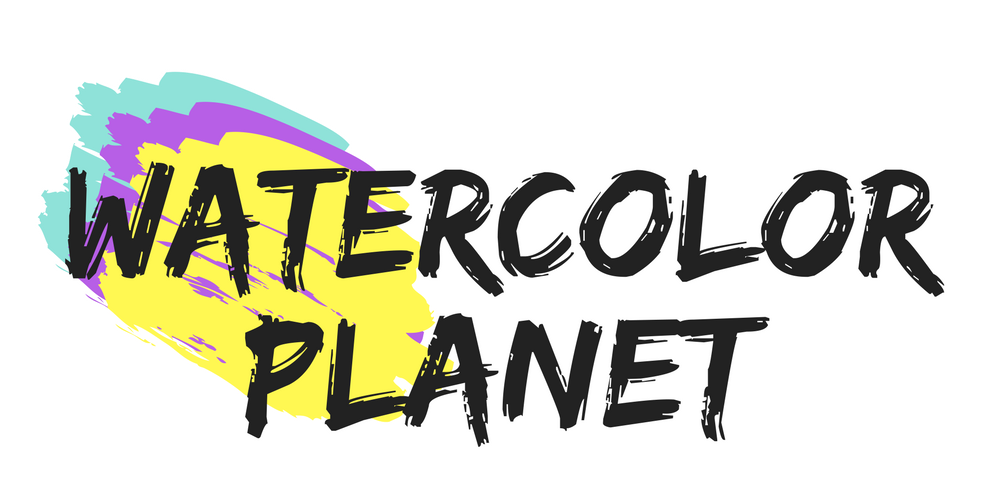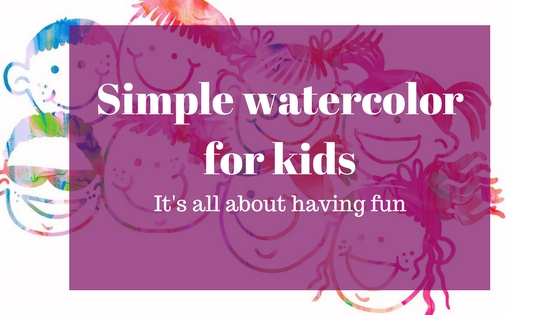When it comes to teaching watercolor painting to children, it can be reasonable to expect a different approach than when teaching adults. Children are restless; they are always moving around. They are not so friendly with too theoretical approaches, but they are more open to experimentation. They learn by doing. So the best watercolor for kids lessons must take into consideration a child perspective of learning.
Let’s see some views on the best approach to teach children how to learn watercolor painting.
Why should children learn watercolor painting?
Watercolor for kids produces far greater benefits than you imagine. It can be considered more than simply a ludic activity, but an exercise that can make children thrive in every aspect of their life. Even though we are talking about the benefits of art and watercolor as its medium, this overview is applied to other forms of artistic expression.
Creativity
There’s a direct connection between art and creativity. When we hear or see the word art, we automatically associate it with creativity. Art is a great medium to boost creativity, not necessarily only to be an artist, but to be creative in other aspects of life. Creativity is important to succeed in whatever path a person will take.
Neural connections
Since almost every sense such as sight and touch engages in the creative process of art, their minds are greatly stimulated when experimenting and creating.
Helps develop fine motor skills
Closely related to neural connections, since that is what is needed for the development of motor skills. There are a lot of activities involved that can help children in the development of the complexity of their movements. Gripping the paintbrush, drawing shapes, and mixing colors are activities that improve coordination at the first stages of the development of a child.
A previous preparation for writing
As children experiment is more likely that they will discover all the lines and shapes needed to write letters later. Their looking doodle forms are a great deal that better prepares them for successful writing skill.
Problem-solving abilities
Painting means certain activities as part of the creative process —planning, make choices, take a resolution, coming up with ideas, judging results. All of these actions involved make children critical and open-minded thinkers.
Understanding
Art is a way of expressing feelings and concepts. Through art, a person can express their unique view
Countless more reasons justify the importance of artistic expression as part of the integral development of children. Time and resources that aim at art expression in children are a must investment that boosts their early development.
Thinking as a child does
As adults, there might be a tendency to overlook the real potential kids have. We have a lot of inhibitions that makes us judge certain ideas as silly, while children are always doing things we wouldn’t come up with. Learning to think like a child is what lead to some people create original ideas that succeed.
Picasso was very assertive when he said: “Every child is an artist. The problem is how to remain an artist after he grows up”. Thinking like a child does not only helps us to teach a child, but it results in a personal benefit that can make us more creative. It is important to approach a kid learning the proper way by being spontaneous and keeping a simple language as explaining the different techniques.
Remember, watercolor is about the journey. So, you’ll have to enjoy the process of teaching as much as kids do when learning the watercolor art.
Let kids take over their creative part
The process of developing a creative attitude, of course, must follow certain rules. There has to be a guided and systematic approach so that the children familiarize with the different elements of art. But the guide you provide them must be intended to let them take over their creative process. Watercolor for kids is all about experimenting. At their first stages of learning don’t talk to them about techniques, give them time enough to make discoveries by themselves.
Perspective
To get started, teach them about perspective, don’t try to make a sketch at a blackboard and provide
Supplies
When children are getting started to watercolor, you can use student’s art supply. You’ll only need three round brushes, a small, a medium, and a large one. It is also recommended to work on a small scale at the first stages of learning so it can be easier to handle the mess. In this case, you can get small paper sheets or pads. Paint has to be special art paint for kids.
Playing with colors
First, let children experiment with separate primary colors—red, blue and yellow. Let them see the dynamic and expression of color, how it looks on paper, how it changes when adding water. Every color has its unique traits, and the best way children can learn about it is by playing with them. Then let them create a different kind of shapes, guide them on how to gradually add water and see how color tones can be graded.
Once they have played around with single primary colors, let them mix them to create secondary colors like orange, green and purple. The best way is that they create sketches of real things, a landscape, a house, a chair, trees, animals, and so on. Let them focus especially on the translucent property of the paint so they can appreciate the nature of watercolor.
At this point do not talk to them about techniques, it’s a stage of experimentation. Once they are more comfortable with the paints, you can begin teaching them the different basic techniques. If you would like to know a lot of fun watercolor techniques for kids, you can go to https://artfulparent.com/watercolor-techniques-ideas-kids
Encourage them
As kids experiment, they’ll soon begin to make their observations. They might feel frustrated sometimes because of not getting the expected results. So, you must motivate them to keep practicing and kindly explain to them that mastering the technique might take some time. It is also important to point out the aspects they can improve.
You are a hero
Children have such an absorbent mind that they can replicate everything you do. When you take your kid with you when painting a special artwork, they will be receptive to every single thing you do, and the best practices you use to get the most out of your creative process will soon be theirs. If you are a parent, you can feel proud of being a model for your child.
You can make your child take active participation when asking questions. For example, as working on a painting, you can pretend to have forgotten some steps and asked something like: what do I need to do first before starting with this painting? What colors do I need to get this color? What brush do I need? These way you’ll make sure kids understand the necessary steps.
Create the proper learning environment
The learning environment must meet certain conditions so that children feel invited and inspired to learn. A room with enough space and light, everything arranged in an ordered way, so that is easy to get supplies when needed.
Colors of the room is an important factor
Temperature is also important for the comfort of children while working. It doesn’t have to be too hot nor too cold.
You can decorate the room with appealing items that somehow motivate them. It can be a mini cactus in a pot, and artworks of other artists, and also furniture like shelves with books, a large table, and anything you consider can create a good environment. Let children engage in the creation of learning environment. You can even let them hang their artworks on the wall.
But a good environment is not always in the interior of a house; you can take your child regularly outside. Nature and society itself is our main source of inspiration where a child can capture spontaneous moments and the best field of action that can lead them to develop a conscience attitude toward our environmental condition and be an agent of change.
Watercolor for kids is a joyful, inspiring and rewarding activity. There’s no doubt about the full potential it can have in the development of children.



If you are interested in teaching your kid to watercolor, and in the process learn some too. This is one of the biggest best sellers of the last years.
Thousands of persons of many ages are talking wonders about it. Click the link to get the latest price.


